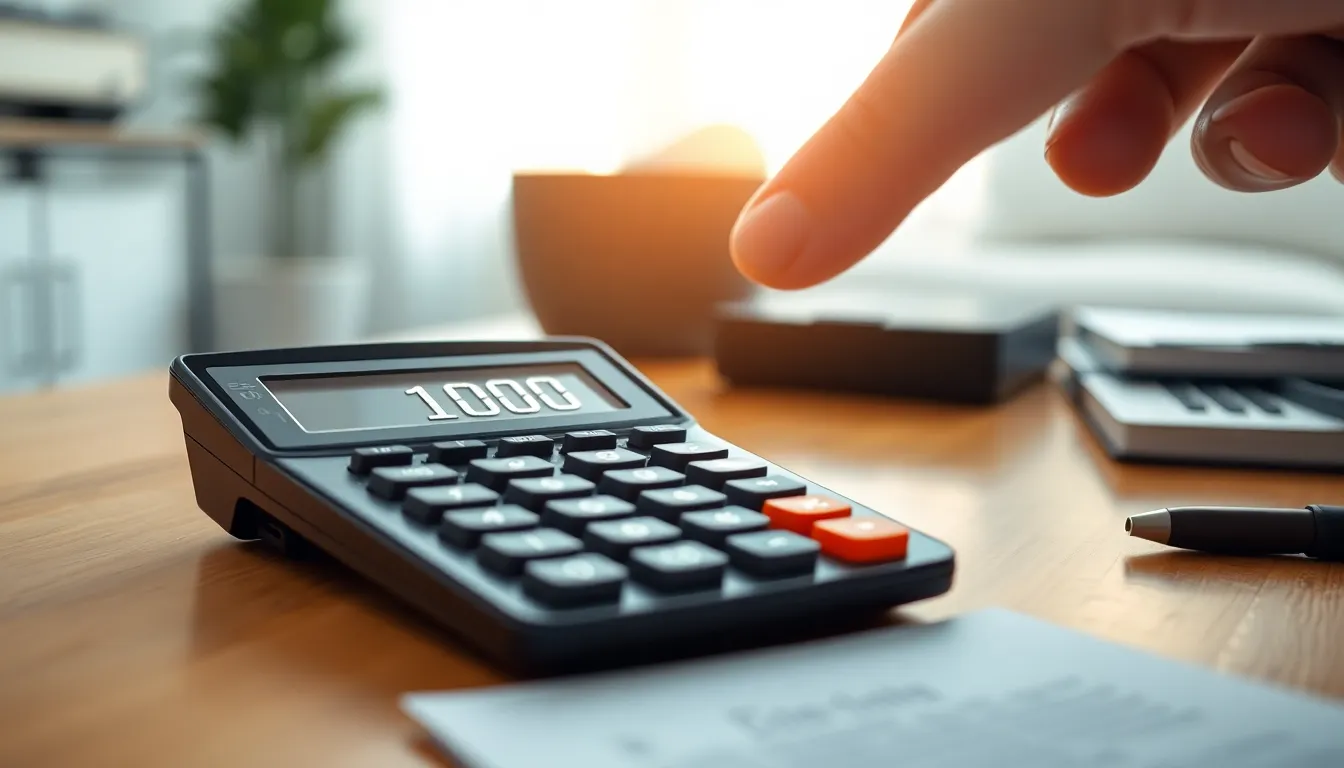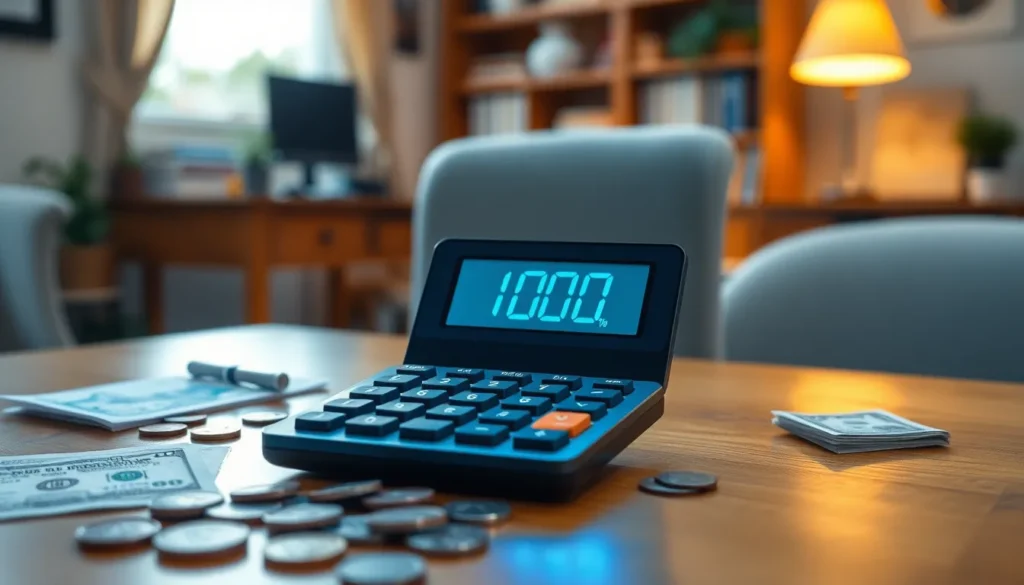Table of Contents
ToggleWhen it comes to numbers, sometimes they can feel as confusing as trying to assemble furniture without instructions. But fear not! Today, we’re diving into a simple yet essential math question: what is 5% of 2000? Spoiler alert: it’s way easier than figuring out how to use that mysterious Allen wrench.
Understanding percentages can unlock a treasure trove of insights, whether you’re budgeting for a shopping spree or calculating tips after a delicious dinner. So, let’s break it down and discover how to find that elusive 5% of 2000. Get ready to impress your friends with your newfound math skills—because who doesn’t love a good party trick?
Understanding Percentages
Understanding percentages provides insight into how values relate to each other. This knowledge proves useful in daily decisions, from financial planning to calculating discounts.
Basic Definition of Percentages
A percentage represents a fraction of 100. It indicates how much one quantity is in relation to another. For example, 5% signifies 5 out of every 100 parts. This expression helps in comprehending proportionality in various situations. Readers can recognize that percentages play a critical role in finance, sales, and statistics.
How Percentages Are Calculated
Calculating percentages involves simple arithmetic. To find a percentage of a total, multiply the total by the percentage expressed as a decimal. For instance, to calculate 5% of 2000, convert 5% to 0.05. Then, multiplying 2000 by 0.05 yields 100. Consequently, understanding the calculation method equips individuals for practical applications, making tasks like budgeting easier.
Calculating 5% of 2000

Calculating 5% of 2000 requires a straightforward approach. Understanding the method simplifies this task and promotes confidence in everyday math skills.
Step-by-Step Calculation
First, convert 5% into a decimal by dividing it by 100, resulting in 0.05. Next, multiply 2000 by 0.05 to find the value of 5%. This calculation results in 100. Therefore, 5% of 2000 equals 100, a clear and comprehensible process that can be applied to other percentages as well.
Using a Calculator for Precise Results
Using a calculator makes finding percentages quick and easy. Input 2000, multiply it by 5, and then divide the result by 100. This method confirms that 5% of 2000 equals 100, ensuring accuracy with every calculation. Many calculators also have percentage functions, simplifying the task even further for those less familiar with manual methods.
Real-Life Applications of 5% of 2000
Understanding how 5% of 2000 applies in real life provides valuable context for daily activities. The calculation translates into practical implications across various fields.
Financial Contexts
In finance, understanding percentages like 5% is crucial for evaluating interests and expenses. Borrowers often encounter terms that include percentages on loans. For instance, a loan of 2000 dollars at an interest rate of 5% results in a charge of 100 dollars in interest. Knowing how to calculate this easily helps in budgeting and ensuring manageable debt levels. Additionally, savings accounts may offer similar interest rates; for a deposit of 2000 dollars, an interest of 100 dollars accumulates if the interest rate stands at 5%.
Everyday Examples
Everyday scenarios frequently require percentage calculations to simplify decision-making. For instance, when dining out, calculating a 5% tip on a 2000-dollar bill results in a 100-dollar gratuity. Shoppers may also encounter discounts; for a 2000-dollar purchase with a sale of 5%, the discount becomes 100 dollars. Students often calculate 5% of grades, demonstrating how this percentage plays a role in academic performance. These examples illustrate the relevance of understanding percentages for effective day-to-day financial management.
Importance of Knowing Percentages
Understanding percentages plays a vital role in decision-making across various contexts. Mastery of percentages facilitates informed choices in budgeting, shopping, and financial planning.
Benefits in Daily Life
Knowledge of percentages enhances daily financial transactions. Individuals frequently calculate tips at restaurants or assess discounts on purchases. Knowing how to determine 5% of 2000 assists with these calculations, resulting in smarter spending habits. It simplifies evaluating savings and expenses, such as understanding interest on loans or deposits. An example involves recognizing that a 5% tip on a 2000-dollar meal leads to 100 dollars. This clarity promotes confidence in managing personal finances.
Relevance in Academic Settings
Percentages also serve an essential function in academic environments. Students apply percentage calculations in math, science, and economics. Proficiency in converting percentages aids in solving problems related to statistics and data analysis. For instance, calculating test scores or understanding grading criteria often involves percentages. Mastering these skills helps learners comprehend broader concepts, empowering them in studies and assessments. Ability to determine 5% of 2000 exemplifies a fundamental mathematical principle useful for students at all levels.
Mastering the calculation of percentages like finding 5% of 2000 is a valuable skill that enhances financial literacy. This knowledge not only simplifies budgeting and spending decisions but also empowers individuals to make informed choices in everyday life. Whether it’s calculating tips or assessing discounts understanding percentages plays a crucial role in effective financial management.
By applying the straightforward method discussed readers can confidently tackle similar calculations. This foundational math skill is essential not just for personal finance but also for academic success. Embracing these concepts can lead to smarter spending habits and a clearer understanding of financial relationships.





